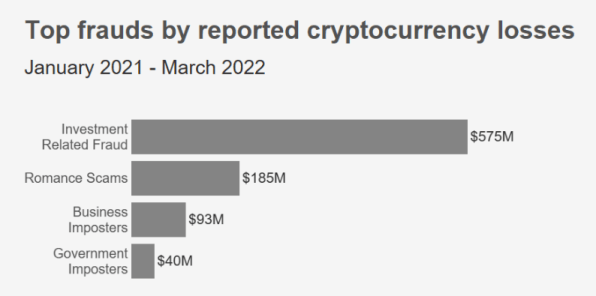Romance scammers are on the rise—and they’re ripping off millions in crypto
It turns out, the “Tinder Swindler” wasn’t the only one allegedly scamming romantic partners. According to a new report from the Federal Trade Commission (FTC), Americans have been scammed out of more than $1 billion in cryptocurrency since the beginning of 2021; and a large chunk—$185 million—was lost in so-called romance scams, which are on the rise. Additionally, more than half of all losses —$575 million—went to bogus crypto investment opportunities.
According to the report, cryptocurrency is becoming a popular vehicle for fraud. Some $329 million in crypto was lost to scams in the first quarter of 2022—nearly half of the amount for all of 2021. From January 2021 to March 2022, the agency found that “about one out of every four dollars reported lost to fraud paid in cryptocurrency”—more than any other payment method. And about 30% of the money lost to romance scams was in crypto.

One of the most common entry points for scammers who made off with crypto was through social media, with nearly half of the more than 46,000 victims saying that the scam started with “an ad, post or message on a social media platform.” Instagram and Facebook accounted for 32% and 26%, respectively, of the reported scams that started on social media. Another 9% started on WhatsApp and 7% on Telegram.
The median loss for individuals who were scammed was about $2,600, with Ether, Bitcoin, and Tether the most commonly stolen cryptos. In a post Friday, the agency explained why cryptocurrency is one of the most effective ways to steal money: “There’s no bank or other centralized authority to flag suspicious transactions and attempt to stop fraud before it happens. Crypto transfers can’t be reversed—once the money’s gone, there’s no getting it back. And most people are still unfamiliar with how crypto works.”
Relatively younger groups are falling for crypto scams, notes the FTC. The agency reports that individuals ages 20 to 49 are three times more likely than older age groups to lose money to a cryptocurrency scam, and 35% of those scammed were in their 30s.
To avoid scams like these, the FTC warns to look out for three main red flags: someone guaranteeing a big return on an investment; a company or person requiring you to buy cryptocurrency in order to “sort out a problem” or to “protect your money”; or a new romantic partner offering to help you invest. “If a new love interest wants to show you how to invest in crypto, or asks you to send them crypto,” the agency warns, “that’s a scam.”
(28)


